IN THE Legend of cruiser hustling, Skirmish of The Twins has hardly any equivalents. First organized in the US at Daytona in 1981, the 50-mile arrangement has produced numerous epic duels—and prodded the advancement of the amazing Britten V1000. The waves from those booming early races are still felt today, as proved by this mind-boggling BMW racer that cleaned up into our inbox. It originates from exemplary race bicycle fan Scott Kolb, who’s based 90 minutes north of New York City.
Scott had a hypothesis: “An air-cooled BMW motor in a sweet case, with the correct rider, could conceivably pummel on present-day sportbikes at nearby track days.” He set out to fabricate a 310-pound [140 kg], 82 pull track bicycle.
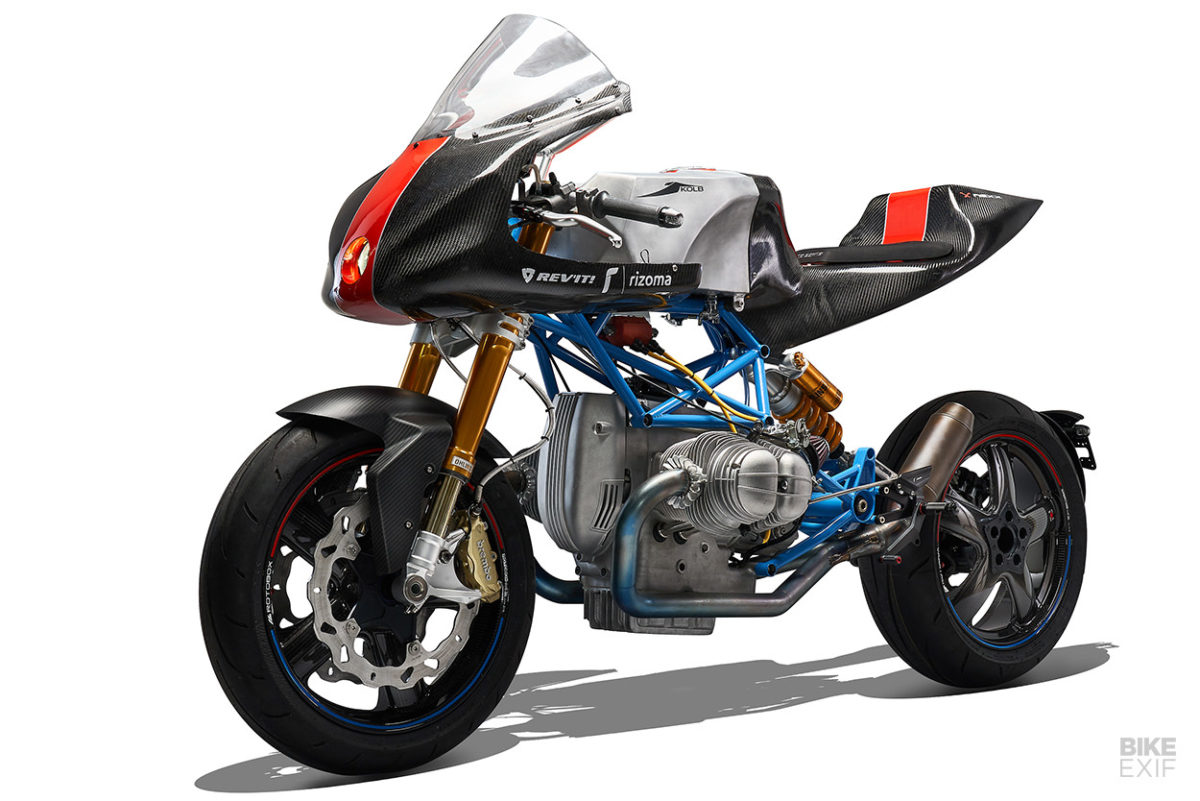
Affected by the works of Tony Foale and the race bikes of Chris Hodgson, Scott chose to manufacture praise to the incomparable Daytona BoTT racers. So he pulled the motor from his 1976 R90/6 street bicycle and put the remainder of the machine on eBay to help pay for parts. Luckily, he had a customer with a similar vision. Furthermore, similar to Scott, the customer works in a perfect quality engineering field, and he is a hands-off kind of fellow.
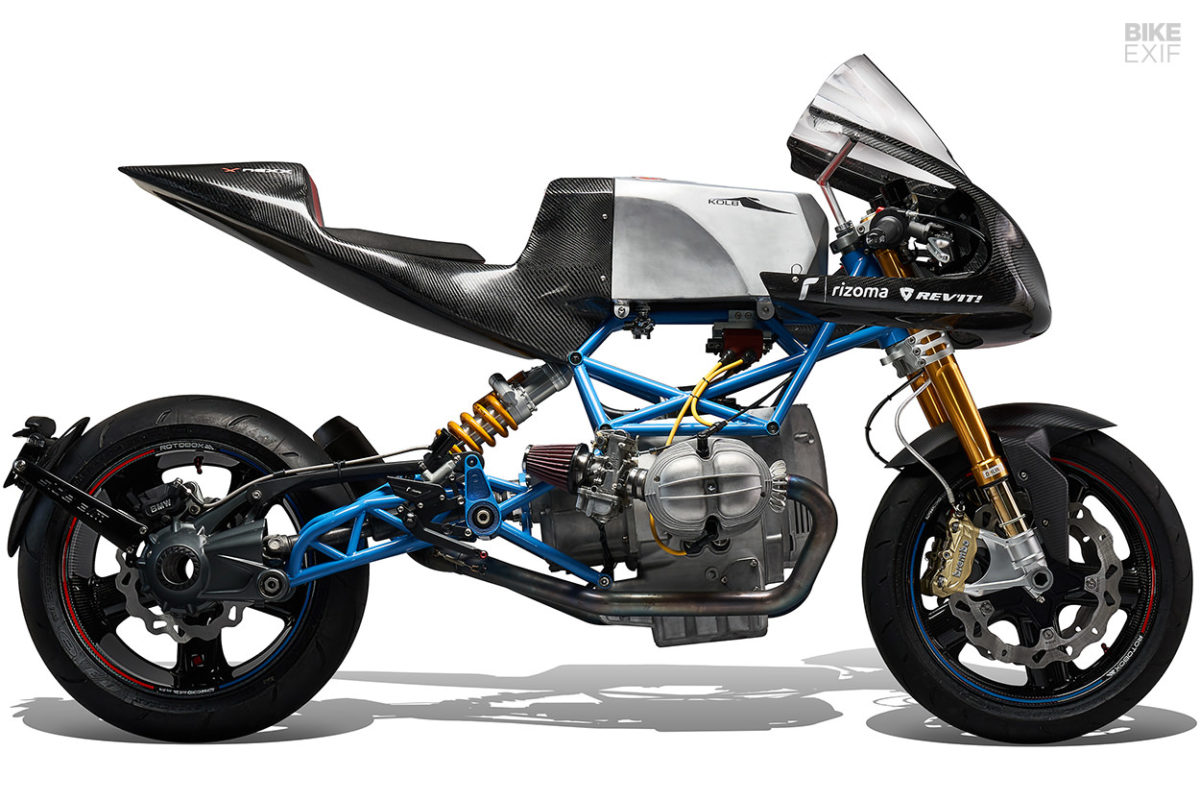
“We’ve both seen enough customers ruin the extraordinary plan by weakening the first vision,” says Scott. “The best ventures originate from a reliable and unadulterated plan thought.”
“Keeping that in mind, he offered no editorial—not even about shading. In any case, he said, ‘The bicycle needs to fit me,’ and left it at that. He’s 6′ 4″ and 240 pounds, [109 kg], so I made a bicycle to quantify.”

Like a decent suit, this BMW fits him to a tee. First of all, both the wheelbase and the ergonomic triangle—pegs to bars to situate—are 5% greater than the ordinary creation bicycle.
This is natural for Scott because the numerous frame he has worked in the course of the most recent 20 years has a harsh spotlight on work—while being aware of the requirement for the visual stream.
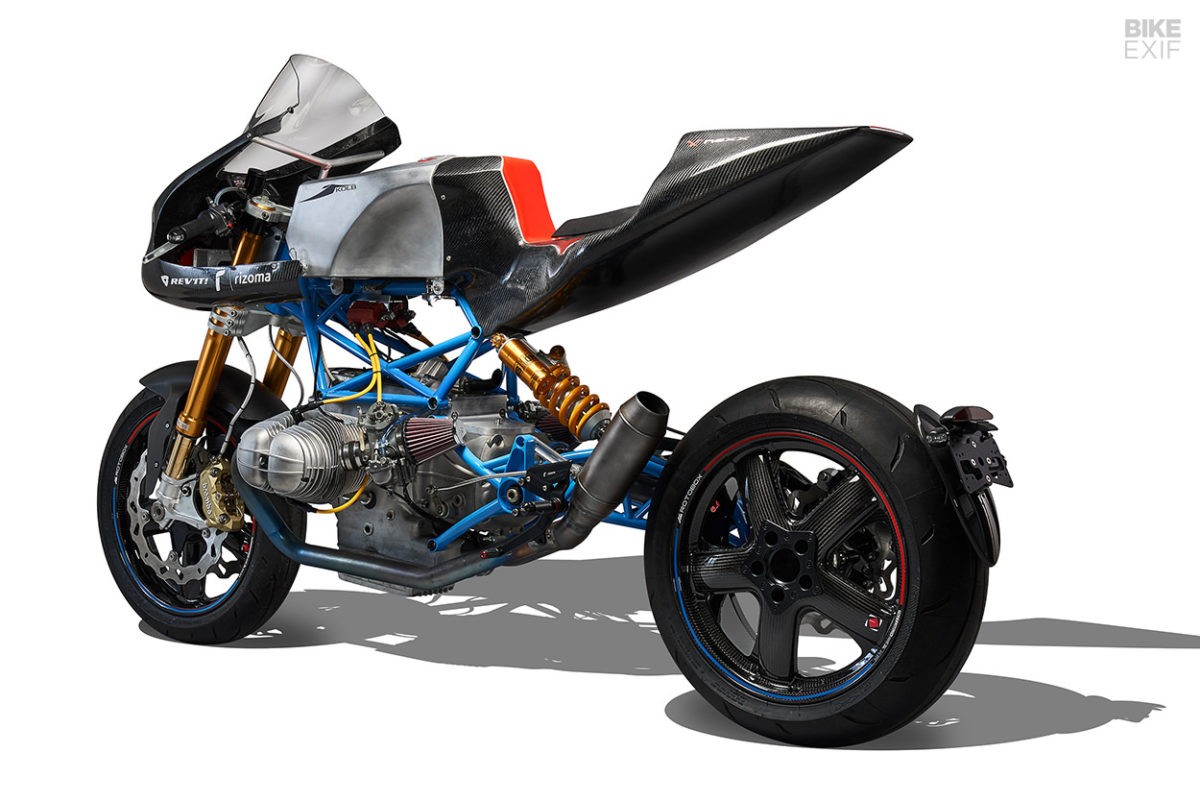
Scott realized that the actual weight figure would require carbon wheels from Rotobox and Öhlins R&T suspension front and back. The carbon wheel is accessible for the BMW R nineT, which provoked Scott to utilize other R nineT parts like the rearsets, switches, signals, mirrors, and a tag transporter from Rizoma.
“Rizoma utilizes surface machining on a considerable lot of their parts, which appears in the machining flowlines left behind by the ball factory shaper. I love this look: it includes a little surface for a decent vibe under your glove, plays with light, and above all shows the manner of thinking of the CNC developer—giving the parts a human touch.”
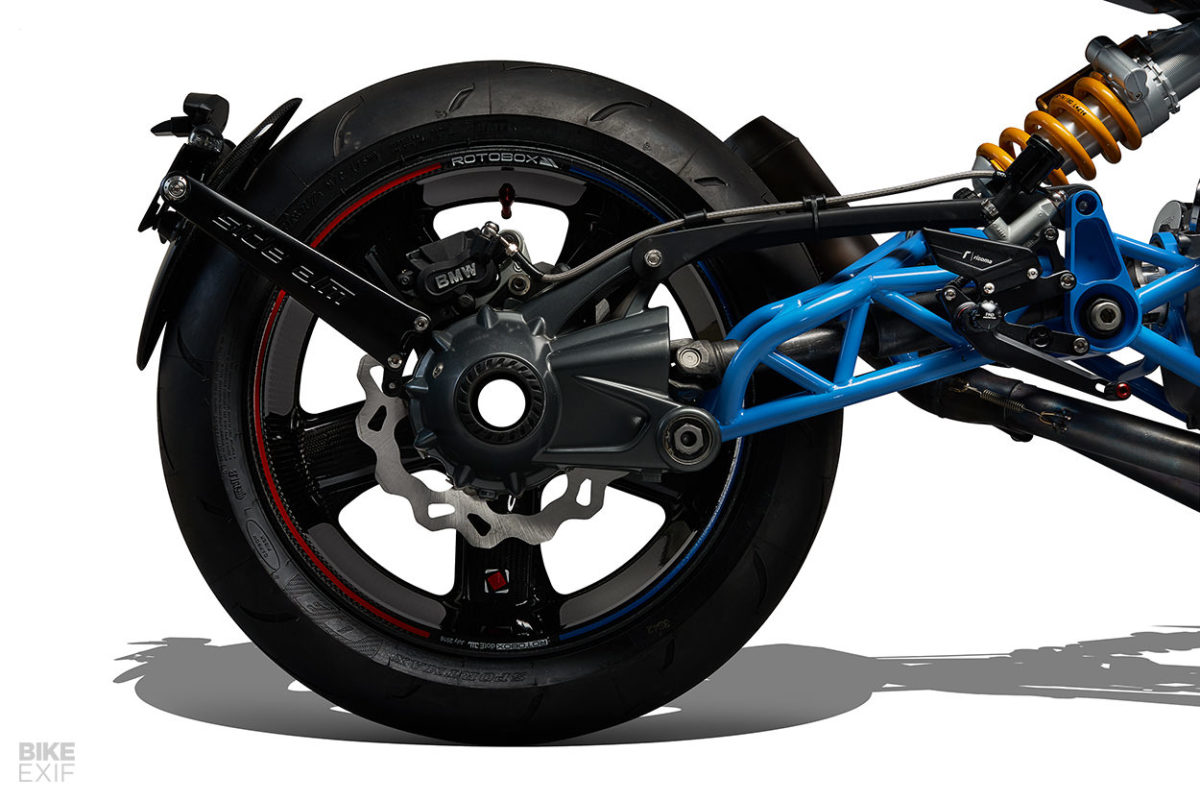
The motor has all the tremendous go-quick bits offered in the mid-80s by Chris Hodgson’s CC Items outfit (which has now transformed into San Jose BMW). The heads are double-stopped, with bigger valves and porting and streaming. There’s a helped and adjusted flywheel, a presentation grasp, and a wrench powerfully tightened by Falicon. Dislodging has been knocking up to 1000 cc utilizing the notable Siebenrock large-bore unit.
“A 200-segment back tire was superfluous. However, I was unable to oppose!” says Scott. This necessary an irregular swingarm with new balance and a great deal of machining to get the R nineT back drive to mate up to a moron transmission. The Brembo calipers are from a BMW S1000R, coordinated to Brembo ace chambers, and the grasp is a water-driven arrangement from SWT-Sports in Germany.

The 4130 Chromoly tube body depends on the acclaimed ‘Group Fragmented Fighter’ claimed by picture taker Gregor Halenda, yet goes one better.
It incorporates a comparable engine mount that connects to the highest point of the motor square and disposes of the support downtubes. “This outwardly opens up the awesome cast obstruct that we as a whole love,” says Scott, “however, the genuine advantage is speedier lap times.”
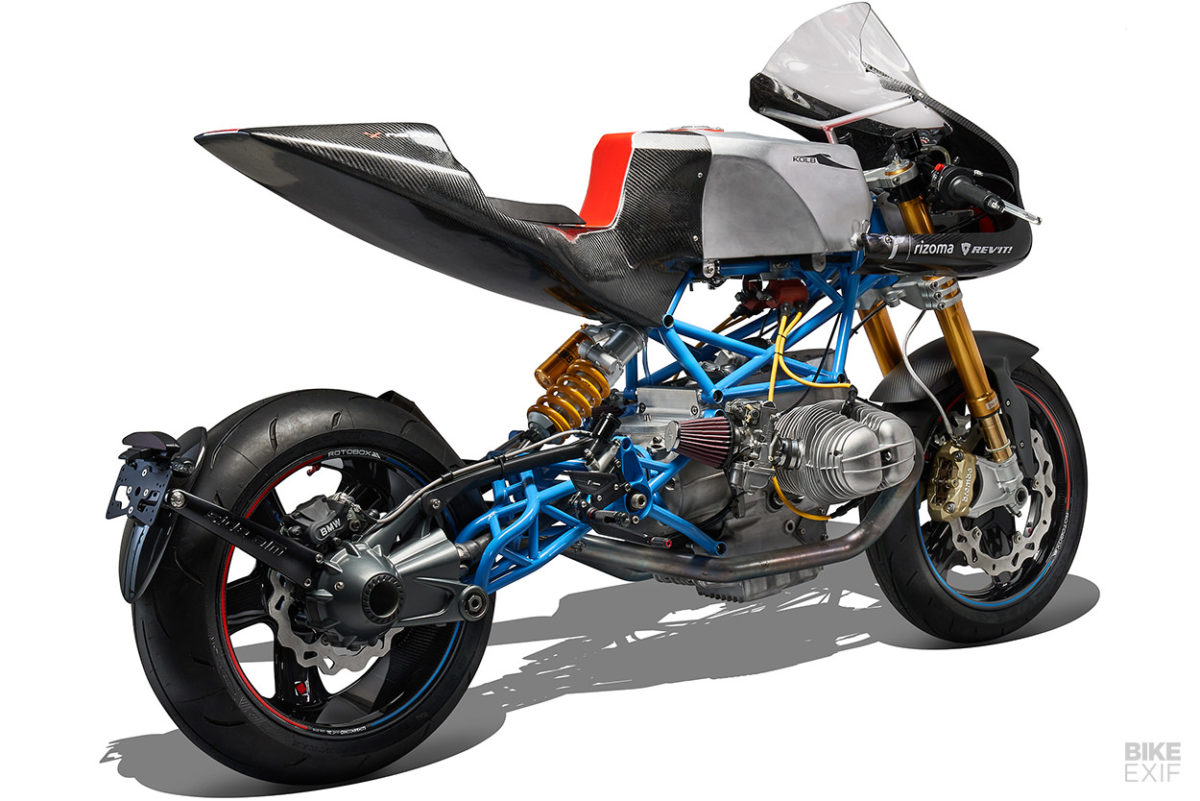
The powder-covered tubing is a wondrous thing, and the ‘one better’ part is a back billet mounting square to wipe out the cylinders coming to the base back of the motor square. “While we were grinding away, we understood we could detach the powers of the back swingarm from the front end by making the swingarm rotate in its subframe.”
The bodywork was styled in-house. “It’s basic shapes, found by laying lines over photographs of the moving body,” says Scott. “The genuine shapes were framed by chiseling froth, and afterward, forms were made.”
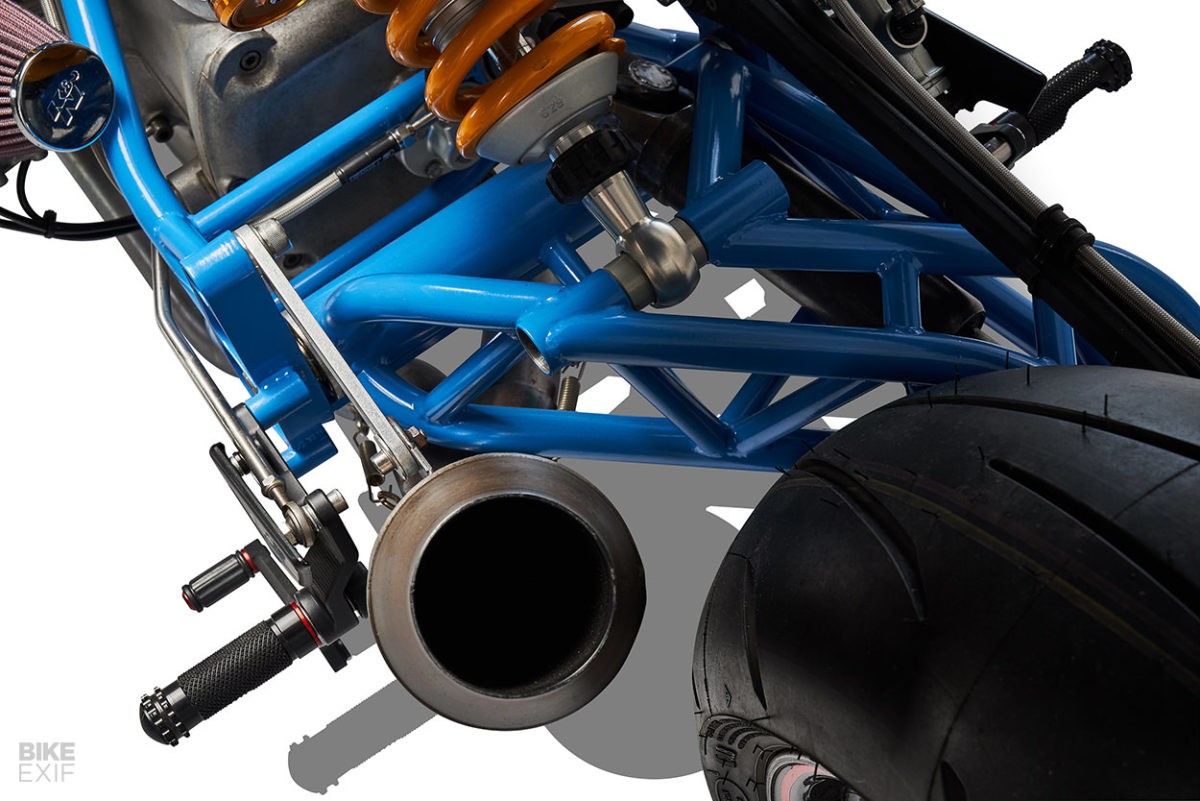
The fairing and seat unit were laid up in carbon fiber, with the external layer being a 3oz twill weave. (“I like how the filter kilter weave gets the compound bends to pop truly.”) The tank was pounded out of .062 aluminum and is done with a Rizoma fuel top.
The innovation might be current. However, the body completes having a trace of retro style. “I love 70s visual communication,” says Scott. “Essential shading plans were wherever when I was a child and appeared to impact my organization’s stylish decisions.”

“An unadulterated cyan is utilized on my organization logo, and consistently appears to make it into our race bikes. Toss in the Öhlins gold and Rizoma’s red accents, and you have a bicycle prepared for the full essential shading treatment—which leads to the red stripe down the focal point of the body, parting the carbon and aluminum.”
The hardware is ultra present day, with a Motogadget m.unit control box at the middle, taking signs from attentive m.buttons and a keyless start framework. “The keyless beneficiary is covered up in the carbon fiber seat unit, alongside the entirety of the gadgets,” Scott uncovers. There’s another start module as well, from Euro MotoElectrics.
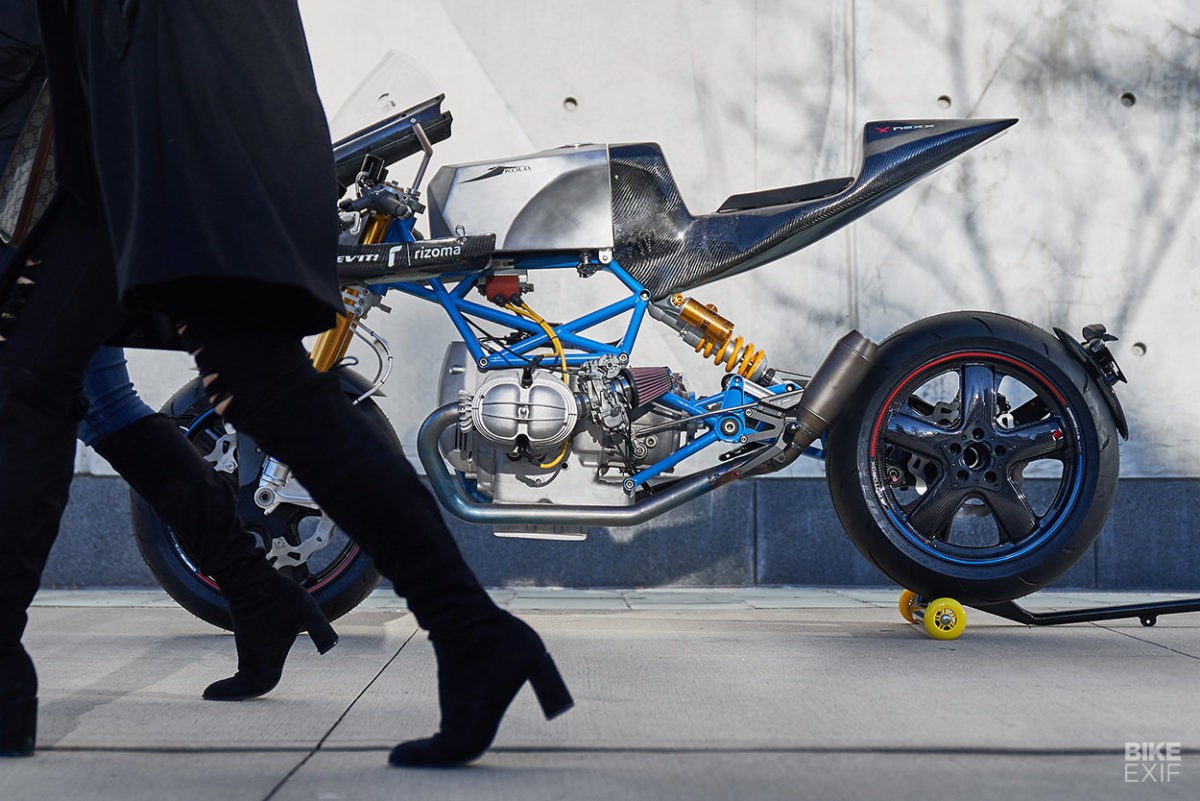
The BMW hits the 310-pound, 82 pull target, and Scott has completed it without a moment to spare to dispatch it to the One Moto Show at the Veterans Remembrance Amphitheater in Portland, Oregon, which opens on February 7.
When he recovers the bicycle, it’ll be fettled and tuned for the track, and prepared for casual fights with increasingly current sportbikes. It’ll be charming to perceive how its passages.


